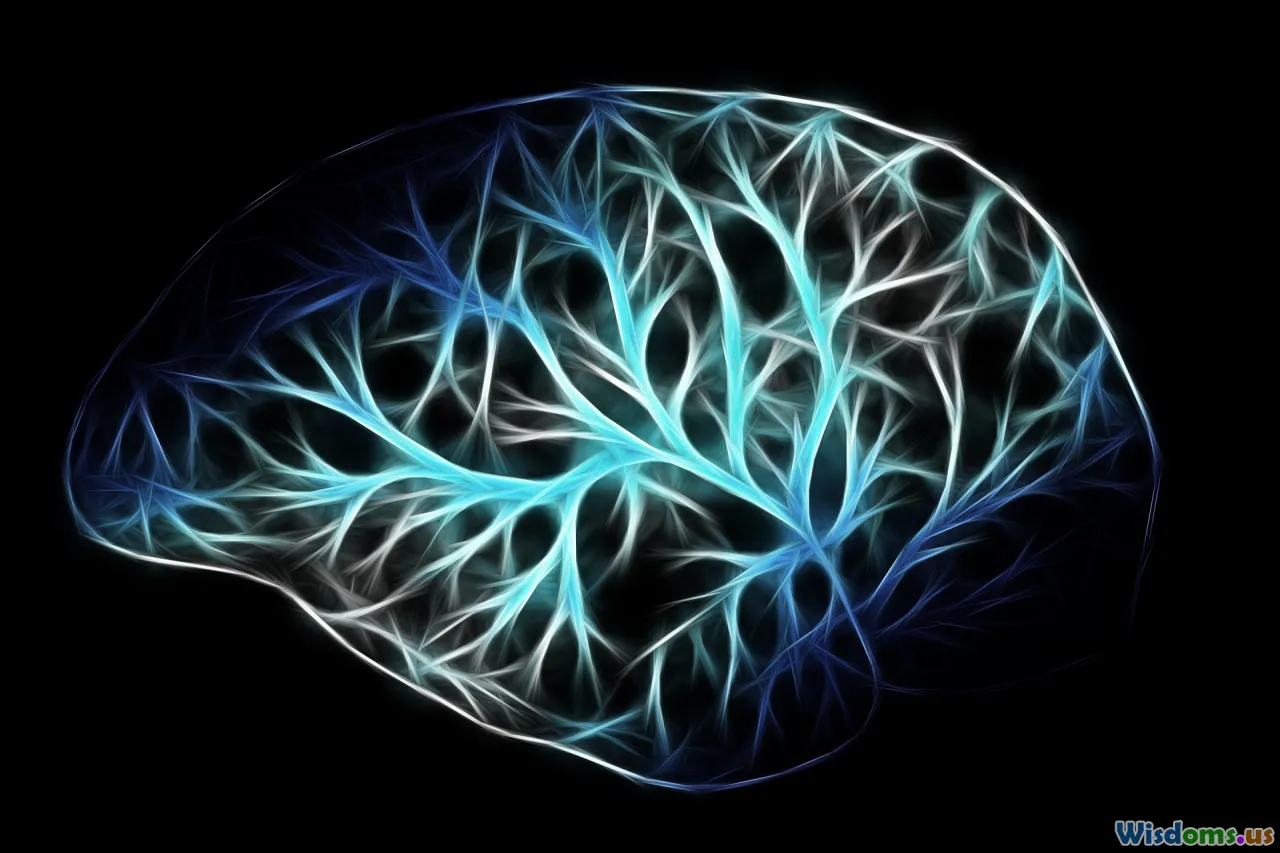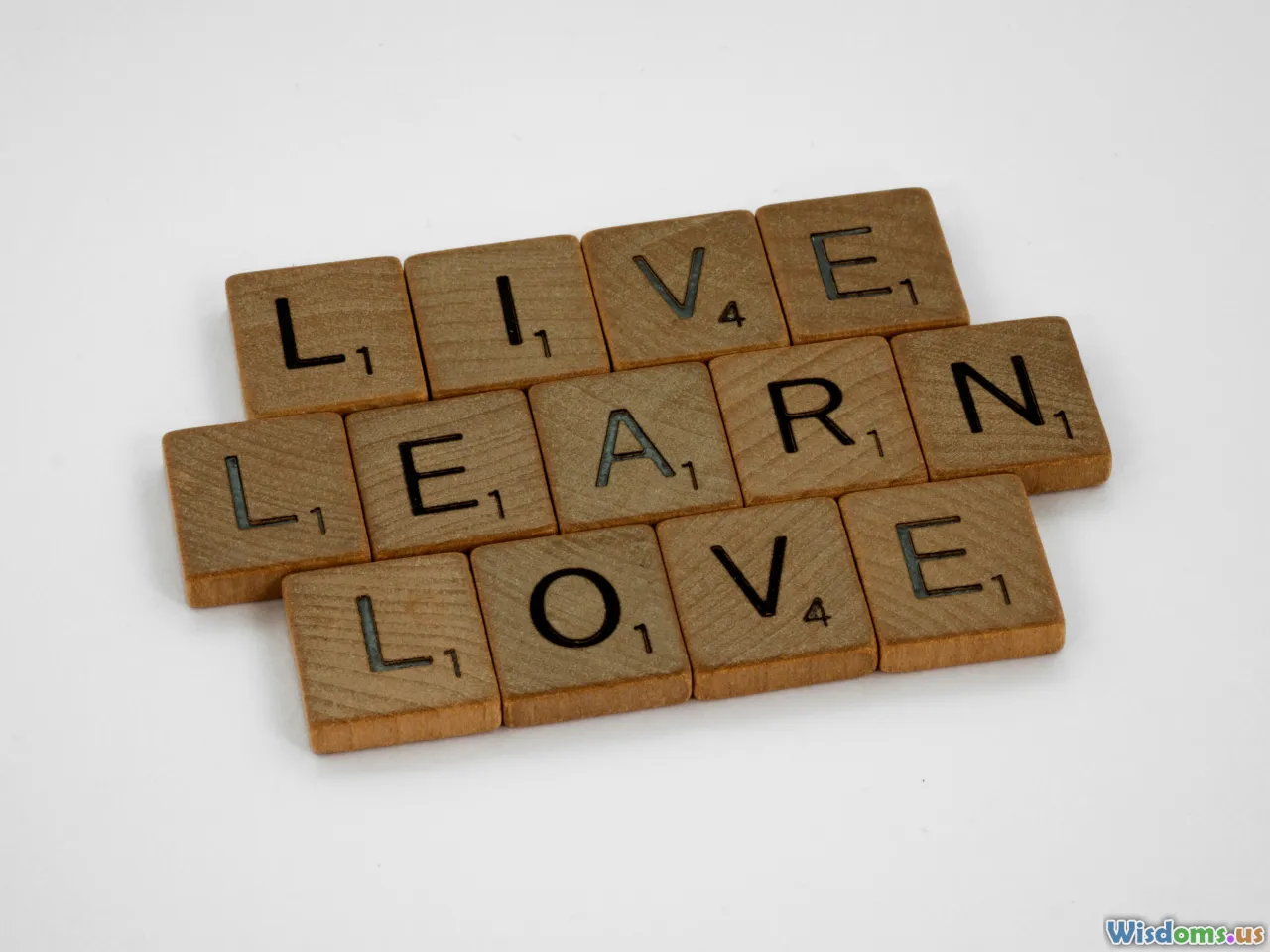
The Science Behind Emotional Intelligence Your Psychology Textbook Missed
17 min read Uncover the latest research and surprising truths behind emotional intelligence that traditional psychology textbooks often overlook. (0 Reviews)
The Science Behind Emotional Intelligence Your Psychology Textbook Missed
Understanding feelings and managing emotions is often dismissed as soft skill territory. Yet, research into emotional intelligence (EI) is uncovering a visceral, cerebral, and practical phenomenon that even the most sophisticated psychology textbooks sometimes skirt past. To fully appreciate why some people navigate life's storms with aplomb while others flounder, it helps to delve beyond clinical definitions and examine the intricate web of neuroscience, gut instincts, and social biology that underpins emotional intelligence. Let's take a guided journey through the science that makes EI so much more than just being in touch with your feelings.
The Neural Architecture of Emotional Intelligence

When Daniel Goleman's groundbreaking work thrust EI into the limelight in the 1990s, cognitive and psychological circles took notice. But it's the neural basis of emotional intelligence that adds an entirely new dimension. Modern functional MRI (fMRI) scans reveal that EI is neither localized in a single brain region nor exclusive to higher thinking areas—it's an orchestration.
Consider the amygdala, the brain's ancient threat detection hub. When a stressful event occurs, the amygdala sounds the alarm. But in emotionally intelligent people, another region critical to self-regulation—the prefrontal cortex—steps in to mediate the response before impulsive behaviors run wild. This regulatory cycle is sometimes referred to as the “amygdala hijack"—a term popularized by Goleman himself. Individuals strong in EI tend to recover from emotional hijacks faster by re-engaging the prefrontal cortex and modulating their own reactions.
Another centerpiece in EI's neural map is the anterior cingulate cortex (ACC). The ACC is crucial for adapting to changing circumstances and fostering a sense of empathy. For example, if a colleague in distress lashes out, a well-developed ACC helps you see beyond the behavior to the underlying feelings.
Key insight: Emotional intelligence doesn't mean never feeling upset or scared; instead, it’s about regulating, redirecting, and learning from those emotional surges in real time—a dance choreographed across several brain regions.
Heart–Brain Communication: Beyond Mere Metaphor

The phrase "follow your heart" might sound poetic, but emerging research teaches us to take that advice literally. The heart sends more signals to the brain than the brain does to the heart, communicating via the vagus nerve—a key player in the autonomic nervous system.
This vagal feedback is pivotal in emotional regulation, a pillar of EI. For instance, high vagal tone (a marker of robust parasympathetic nervous system function) correlates with resilience: the ability to recover rapidly from stress. People with higher emotional intelligence generally report higher vagal tone, suggesting they physically embody calm and adaptability during heated moments.
This two-way street between the heart and brain is one reason why biofeedback and breathing exercises are often part of emotional intelligence coaching programs—they can literally alter your body’s response to emotion, rewiring patterns of anxiety and reaction at the physiological level.
Takeaway: Your physiology is not just a passenger in emotional intelligence—it’s part of the steering mechanism.
The Role of Micro-Expressions and Body Language

Ever felt instantly uneasy around someone without knowing why? What you’re picking up on is likely a subtle string of cues—micro-expressions and shifts in posture—that your subconscious mind registers. People with high EI tend to decode these mini-movie moments more accurately.
Decades of research by psychologist Paul Ekman demonstrated that tiny changes in facial muscles—micro-expressions—betray feelings in the blink of an eye. Spotting a contorted lip or raised eyebrow can give clues to discomfort, cynicism, skepticism, or aggression, even if only for milliseconds.
Professional negotiators, therapists, and even law enforcement officers receive training to spot these cues. But guess what? Regular folks can use this power tool too:
- Observe the norms: First establish someone’s baseline behavior—how they typically smile, frown, or sit—before making judgments.
- Look for clusters: A single twitch is not very telling. But crossed arms plus a hardened face, plus averted gaze? Multiple signs boost accuracy.
- Don’t leap to conclusions: High EI involves acknowledging ambivalent data before labeling someone’s state.
Through self-education and patient observation, you can train your brain to read others with the proficiency of a seasoned profiler—not to manipulate, but to empathize and collaborate better.
Twin Engines: Empathy and Theory of Mind

Empathy is often mistaken for sympathy—feeling for someone. But emotionally intelligent individuals deploy empathy—feeling as someone. This distinction draws on deeper concepts in psychology and neuroscience, especially theory of mind (the ability to attribute mental states to others).
Neurologically, this sense of empathy is closely tied to the mirror neuron system. Discovered in the brains of macaque monkeys, these neurons fire both when performing an action and when observing others do the same. In humans, imitation and mirroring actions prime us for emotional resonance. That's why, when someone winces, you might find yourself doing so, too.
Recent findings highlight a genetic link to empathy—specifically, mutations in the oxytocin receptor gene (OXTR), sometimes called the “cuddle chemical,” can modulate natural empathy thresholds. However, environment, modeling, and social context still play a formidable role. A child growing up in a household that discusses feelings openly will likely develop a more robust empathic toolkit than one where emotions are suppressed.
Practical tip:
- Practice "perspective-taking" intentionally with colleagues or friends: Before responding in a heated debate, mentally step into their shoes and ask, "What’s making them react this way? What don’t I know about their background today?"
EI Versus IQ: Why Smarts Don’t Always Win

IQ (intelligence quotient) has often been mythologized as the yardstick for success: blazing academic scores, prestigious degrees, and analytical problem-solving skills.
But research by Dr. Travis Bradberry, co-author of Emotional Intelligence 2.0, and Dr. Jeanne Segal among others, reveals a more nuanced picture: While IQ might get your foot in the door, EI hangs career doors wide open. In a classic TalentSmart study based on 500,000 professionals across multiple industries, emotional intelligence accounted for nearly 58% of a person’s job performance. Strikingly, 90% of top performers had high EI, while just 20% of the lowest performers did—a trend that’s difficult to chalk up to coincidence alone.
Real-world example: Consider two engineers with matching technical skills. One repeatedly upsets team members with blunt critiques, resulting in demoralized meetings. The other interprets emotional cues, offers feedback diplomatically, and builds cohesion. Over time, it's the second—less abrasive, more adaptable—who’s tapped for leadership.
Moreover, emotional intelligence buffers us amid the volatility of the modern workplace—navigating layoffs, restructuring, and multicultural teams. EI acts as the rudder keeping us adaptable, optimistic, and resilient well after IQ stops mattering.
Emotional Intelligence Is Teachable—and Trainable

Unlike static traits such as height or natural eye color, emotional intelligence is highly malleable. Research at Yale’s Center for Emotional Intelligence and Google’s internal "Search Inside Yourself" leadership program both underscore one fact: deliberate practice boosts EI, regardless of baseline.
Key strategies backed by research:
- Mindful self-awareness: Practices borrowed from mindfulness meditation (e.g., paying non-judgmental attention to your feelings) are shown to increase emotional regulation skills. Consider apps like Headspace, or simply spend two minutes daily acknowledging your mood and its causes.
- Reflection: Post-interaction journaling about what you (or others) felt and why is another evidence-backed method to strengthen self-insight and assist in recalibrating social approaches.
- Constructive feedback: Invite neutral feedback from people you trust about your responses in charged situations. Over time, this external perspective can unlock blind spots.
Even digital interventions, including emotion-labeling and awareness training in simple mobile games, reinforce the brain circuits involved in EI, increasing connectivity in prefrontal regulatory regions as observed on brain scans.
Action tip: Set a "name it to tame it" goal for yourself this week—practice clearly labeling your emotions (e.g., “frustrated,” “overwhelmed,” “curious”) each time you notice a mood shift. You might find that this simple exercise tempers the intensity of negative states and sharpens your self-regulation muscle.
Emotional Intelligence Beyond the Individual: Systems and Cultures

EI isn’t just a personal attribute—it's also a collective advantage. Stanford business psychologist Rob Cross’s research on "emotional contagion" in teams highlights how leaders with developed EI ignite and sustain productive work cultures. They do this by modeling healthy vulnerability, constructive response to mistakes, and social awareness during tension.
Consider Zappos, the e-commerce giant celebrated for its unique, tight-knit company culture. Their leaders invest heavily in EI assessments during hiring and emphasize team rituals (like “appreciation sessions”) that foster real connection and trust. Their famously low employee turnover and high morale are testaments to the ripple effect of group-level emotional intelligence.
Educational systems, too, are harnessing EI. The RULER program (an acronym for Recognizing, Understanding, Labeling, Expressing, and Regulating emotions) in K-12 schools has helped students raise empathy, academic achievement, and decrease bullying in longitudinal studies.
Tip for organizations: Conduct regular workshops on EI, establish safe sharing circles, and lead by example—especially among managers and team leads.
The Dark Side: When High EI Is Used Unethically

A surprising finding that's surfaced in recent years: emotional intelligence can be weaponized. Individuals with a high level of empathic skills may sometimes use their powers for manipulation or deceit.
Consider the corporate "Machiavellian": ruthless leaders who anticipate and mirror the emotions of others, not for mutual benefit but for ulterior motives (such as gaining power or undermining a rival). Studies have linked high EI to increased likelihood of engaging in manipulative behaviors, when combined with dark triad traits—Machiavellianism, narcissism, and psychopathy.
This is why experts now emphasize the importance of pairing EI with strong ethical frameworks and other virtues (like honesty and humility). The challenge, then, is for organizations to look not just for high-EI candidates but those with a healthy social conscience and purpose-driven goals.
Future Frontiers: Artificial Intelligence Meets Emotional Intelligence

Until recently, emotional intelligence was regarded as an exclusively human domain. But advances in artificial intelligence and affective computing are changing the landscape.
From therapeutic chatbots detecting signs of depression through typed messages to customer service robots recognizing sarcasm in voice tone, deliberate efforts are underway to model and “teach” emotions to machines. For example, MIT’s Affective Computing Lab is engineering systems that gauge users’ moods by analyzing vocal inflections or facial expressions in real time.
Why does this matter? If designed ethically, emotionally intelligent AI could bolster accessibility (think, apps for autistic individuals who struggle to read facial cues) or revolutionize customer service experiences. But these same tools could also be misused for manipulative advertising or political persuasion.
The ongoing debate: Can emotional intelligence, in its richest, most nuanced form, ever truly be replicated by code? Or will the vital element—the human texture of lived experience—always elude algorithms?
Truly knowing the science behind emotional intelligence means seeing it as more than a collection of positive affirmations or soft skills. It resides at the intersection of brain chemistry, heart rhythms, genetics, social interaction, and even technology. The next time you find yourself navigating a tricky conversation or reading an unspoken feeling, remember: it's centuries of evolution, milliseconds of brain activity, and moments of self-awareness—working together to script every success. Emotional intelligence is both art and science, and now you’ve got the tools to better understand and cultivate it—for yourself, your community, and for a rapidly changing world.
Rate the Post
User Reviews
Popular Posts















